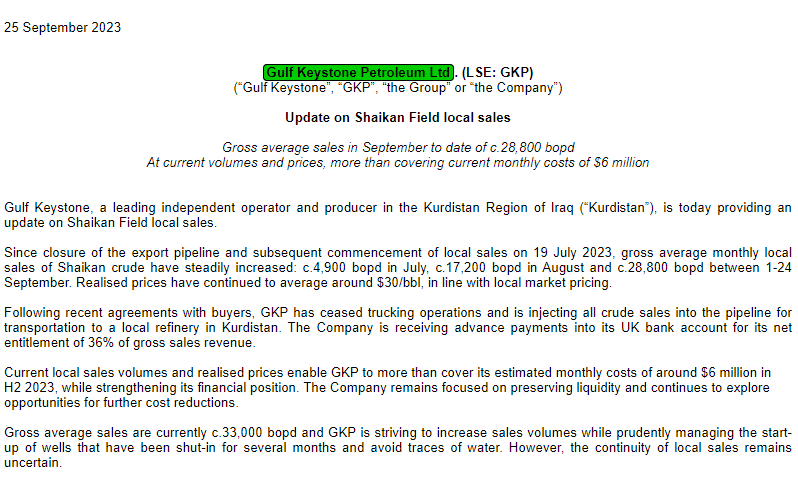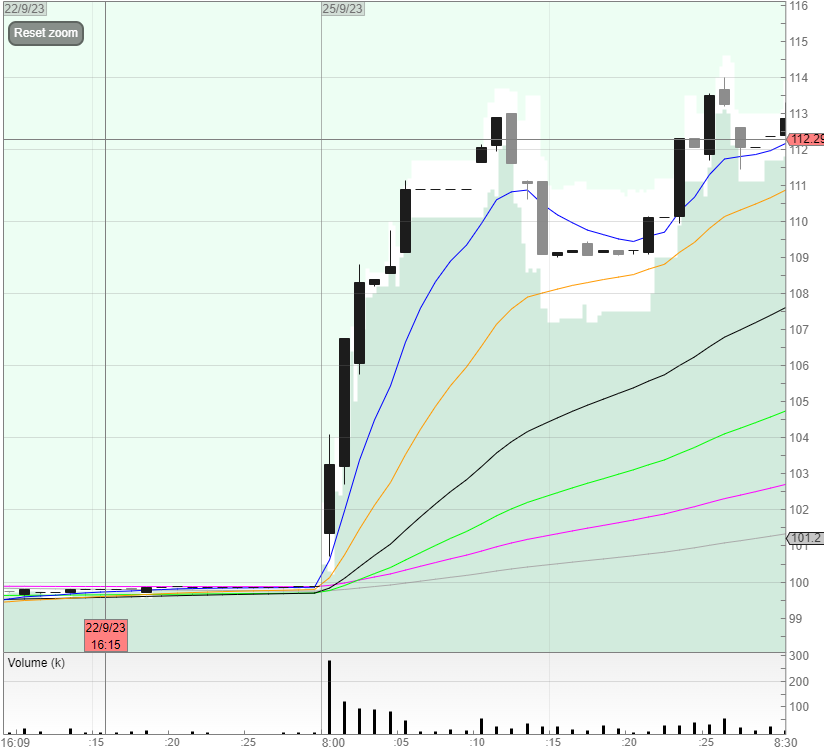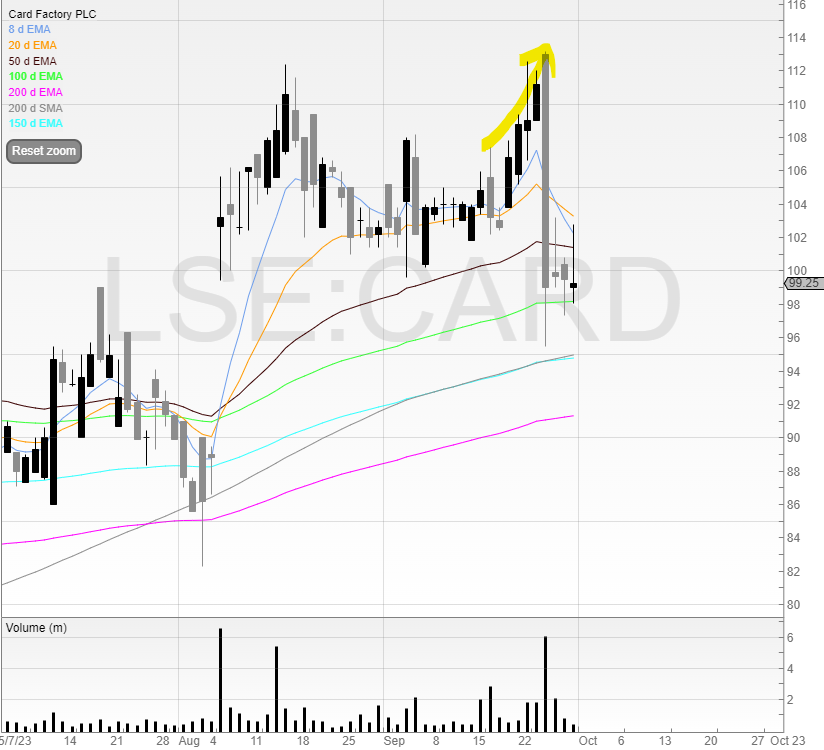Michael looks at two examples of high-beta stocks offering news to trade.
For anyone wanting to trade intraday then high beta stocks – stocks that move more than the market – are ideal stocks to trade.
Especially when it comes to news that can move those stocks.
Here are some examples this week.
Gulf Keystone Petroleum (GKP)
We looked at this stock a few weeks ago in my article on 1 September 2023 (The Trader: The hour between 8am and 9am) and on Monday this stock put out an RNS.
Given the material uncertainty released a few weeks ago, this RNS had a reassuring tone aside from the last comment: “However, the continuity of local sales remains uncertain”.
But that was already known. So whilst it’s negative – it’s not a new negative.
The steadily increasing sales is a positive – c.4,900 bopd in July, c.17,200 bopd in August, and c.28,000 bopd in September.

To contextualise this information, we need to go back to the last update:
“In July, we commenced local sales and partially restarted production. Since then, we have increased gross average sales to around 23,100 bopd towards the end of August.”
Sales have risen further in September (although at a slower rate of growth).
However, the key piece of information lies in the newest update (emphasis mine):
“Current local sales volumes and realised prices enable GKP to more than cover its estimated monthly costs of around $6 million in H2 2023, while strengthening its financial position. The Company remains focused on preserving liquidity and continues to explore opportunities for further cost reductions.”
This essentially means (along with the fact that gross sales are averaging c.33,000 bopd) that the company’s financial position is getting stronger every month.
That’s a big turnaround from the negative update we had a few weeks ago.
Therefore, this had the potential to be a catalyst for the stock that day.

We can see that the stock gapped up and uncrossed at 101p from a close in the prior session of 100p.
That means that the news premium was a total of 1%.
Here’s the thought process behind the trade:
- I think the news is positive, yet the market only thinks it’s worth 1%
- If I trade the stock long and the market views it positively and I am right, there may be an uplift
- If the market thinks the news is neither positive nor negative, then the stock won’t move and I can close out quickly for a small loss
- If the market thinks the news is negative (unlikely) then I can also close out quickly for a small loss
As it happens, there was an uplift in the stock as the market reacted positively and the stock tracked upwards.
I viewed this to be a low-risk trade because of the small news premium and the fact that it was good news. The news premium (or news discount if the stock tracks lower) is the difference between the indicative opening price and previous closing price (naturally the former is subject to change until the uncrossing occurs).
To assess the risk/reward on the trade, you need to look at the news premium or discount against the news that the stock is responding to.
For example, if a stock is mildly ahead of expectations, yet is opening up 20%, then perhaps the stock is opening up with too much of a news premium compared to the actual news. Maybe instead of going long, you ought to be going short.
But if a stock was materially ahead of expectations, yet is opening up 2%, then you might consider this to be a small news premium and a great risk/reward long trade.
Understanding what you’re trading is key when it comes to intraday trading.
Card Factory (CARD)
Card Factory is a popular stock with private investors.
It offered up another trade on results day.

We can see that the stock rose in anticipation of the results towards the resistance zone.
However, the results were in line. The stock then sold off. This is not the first time this has happened – we can see the rally into results and dump on release happened in May too.

Remember, stocks move for two reasons: anticipation and expectation.
Anticipation of an event. And the realised expectations against that anticipation.
Presumably, people bought into the results hoping for a beat. And when that beat didn’t occur, the hot money sold the stock, and short-term short-traders took advantage.
Whenever a stock you’re long of rallies into results – be careful.
Michael Taylor
Get detailed analytics on all of your trades with Michael’s trading journal available free here: www.tradesmash.com
Twitter: @shiftingshares
Got some thoughts on this week’s article from Michael? Share these in the SharePad chat. Login to SharePad – click on the chat icon in the top right – select or search for a specific share or the “Traders chat”.

This article is for educational purposes only. It is not a recommendation to buy or sell shares or other investments. Do your own research before buying or selling any investment or seek professional financial advice.



